
Photos: Alexandre Guillaumot / DPPI
Formula 1’s most dominant outfit has one of the least prominent junior teams, but it’s first three signings all made it to single-seaters’ top level. Paul Aron explains what it’s like being one of Mercedes-AMG’s proteges
For one-and-a-half seasons, Paul Aron has been carrying Mercedes-AMG’s branding on his helmet and overalls as an official junior of the record-breaking Formula 1 team. In fact, he’s been the only driver to do so in junior single-seaters in that time.
During his debut year in car racing with Prema he won four races across twin campaigns in ADAC and Italian Formula 4, and topped the rookie standings in the latter as well as only narrowly missing out on the overall championship runner-up spot. He then moved up to Regional Formula 3 in the Formula Renault Eurocup, but a tricky season with the returning ART Grand Prix team only resulted in one podium left him 11th in the points.
While drivers who finished ahead lost their F1 junior status, Mercedes kept faith in Aron and he now returns to Prema to contest the Renault-powered Formula Regional European Championship where the only ‘new’ element will be Pirelli tyres.
He joined the Formula Scout Podcast earlier this week to discuss why 2020 ended up being such a tricky year, what being back at Prema means for 2021, the secrets of his winter training programme and of course what it’s actually like to represent Mercedes. You can listen to the interview here, read it below, or find it on Breaker, Google Podcasts, Overcast, Pocket Casts, RadioPublic, Castbox, Apple Podcasts and Spotify.
First of all, looking back at 2020. ART GP romped to a double title win in the Eurocup last year, with third-year driver Victor Martins earning his way back into the restructured Alpine Academy by becoming champion. Such was Martins’ dominance that the team only needed three points from his team-mates Aron and Gregoire Saucy to wrap up both titles.
Both contributed more than enough, but there were also many occasions for Aron in particular where points went amiss through mechanical failures, contact with others (both through error and innocence) and avoiding incidents in the midfield.
“The season started, we had problems with the car in the first rounds,” Aron says. “And to be honest after that, the whole year we had problems with the car.
“I think it was like five or six rounds out of 10 we had some technical issues and it was mainly with the gearbox. But the problem was that every time I had pace and every time there was a chance to do something, there was a technical issue or some bad luck that just destroyed all the chances. So for sure at the end of the season it was difficult to show some pace and some good races, when all the year had been really difficult.
“I wouldn’t say the racecraft is my weak point, normally I’m quite good at racecraft. I think it was just everything kind of falling apart all together.”
The COVID-19 pandemic also limited the time Aron spent with ART GP outside of race weekends, and left communication through the season lacking too as Aron was the only English speaker in a team that operated entirely in French.
“One of the main problems last year was that I couldn’t spend much time with the team. So I didn’t really get comfortable with my engineer, we didn’t really trust each other. And when you don’t trust your engineer it’s really difficult to learn. This year, we made sure that I would get along with my engineer well, and for sure Prema made me feel at home.”
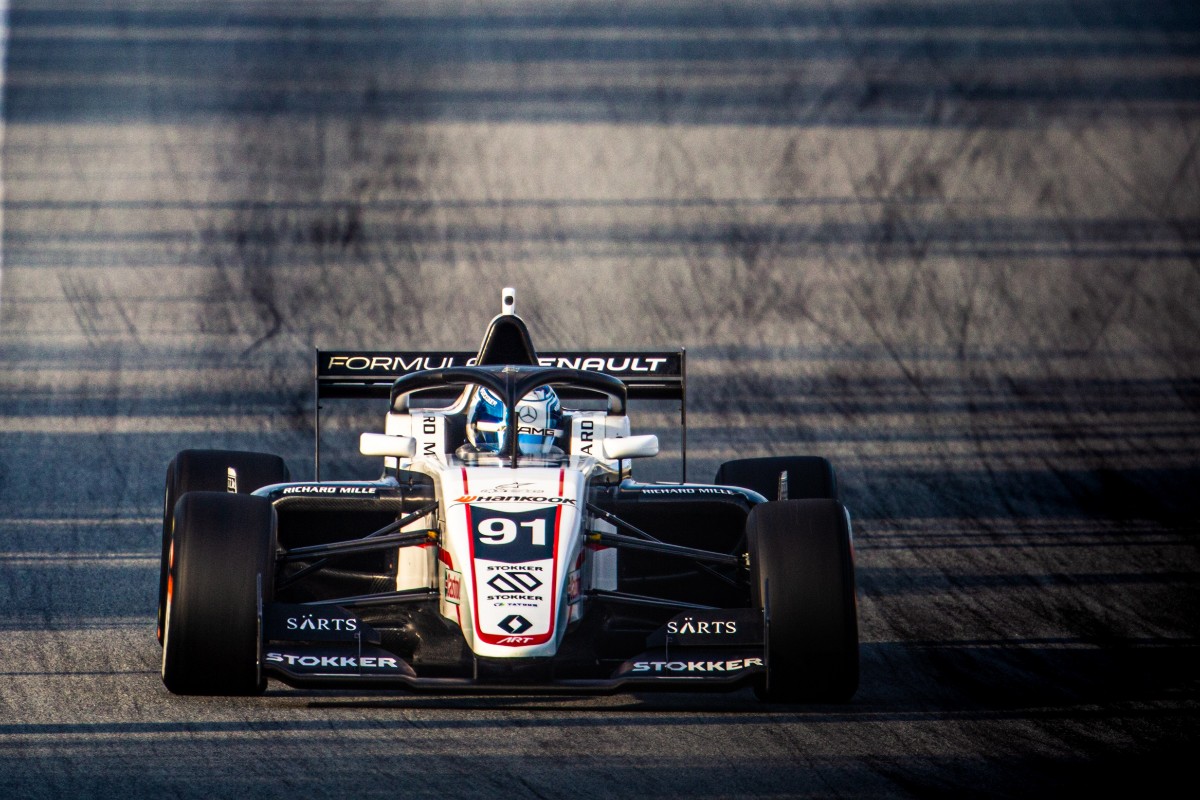
Photo: Clément Luck / DPPI
Aron has already been to Prema’s Italian base this year for its traditional pre-season media activities – which besides photoshoots includes team bonding in activities such as karting and tennis – as well as simulator mileage and a seat fit.
For the 17-year-old it was a “no-brainer” to reunite with the team that had ‘helped me as a driver a lot’ in F4, and his FREC team manager is set to be none other than his older brother Ralf, a rival to Mick Schumacher in F4 and F3 and still only 22.
“He’s been my mentor my whole life, and I probably started racing because of him, because I went to watch his races when I was small,” the younger Aron explains.
“So I think that just gives me even more motivation. But like team-wise, I don’t think it really changes anything. He will still be the team manager, and I will still be the driver.”
Aron’s first mileage in Prema’s Tatuus T-318 car came in a test at Barcelona last December, where he ran back-to-back in the Alfa Romeo-powered 2020 FREC specification car and the Eurocup-spec car with Hankook tyres and topped the timesheet.
“The test at Barcelona with Prema was just superb,” Aron beams.
“The Pirelli tyres are really much, much better than the Hankook tyres. It changes the whole car and the car feels miles better. The team was just amazing, the car set-up from the beginning was really, really good, and the pace was mega.
“There was a problem with traffic quite often, and I think traffic will be a big problem this year because with the Pirelli tyres it’s more like FIA F3 where you do the warm-up and you have one push lap.
“But every time we got a clean lap we were first, and even sometimes with traffic we were still first, so I’m sure that the pace for this year will be mega.”
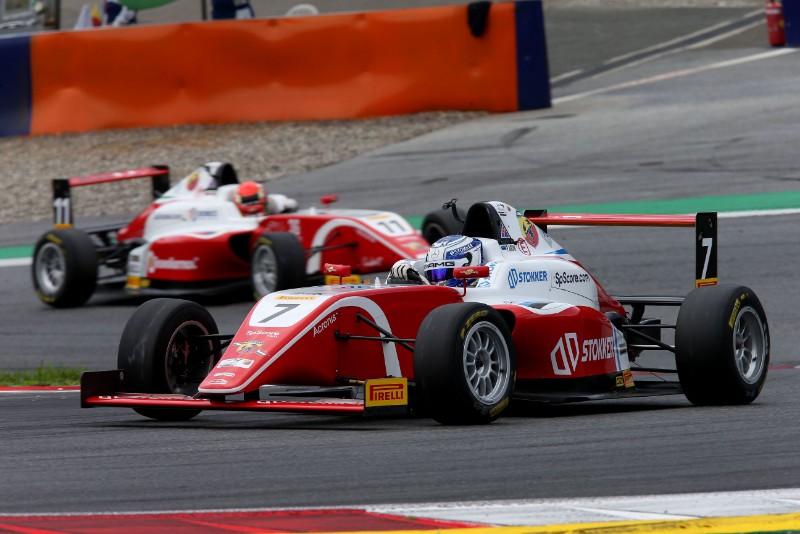
Photo: ACI Sport
ADAC and Italian F4 uses Pirelli tyres built to provide a similar feel to the ones now used in FREC, which may help F3 rookies.
“I think for the guys who are coming from F4 now to FREC have a bit of a, let’s say, upper hand.
“In the Renault car you had the Hankook tyres which were really weird, and it was kind of like there wasn’t any reference for when the tyre was going to be best. You had six or seven laps, and on one of those laps the tyre was going to be the best but you never knew which because the tyre was so inconsistent.
“So when you’re coming from F4, where the Pirelli works really similar to the FREC car, and you have a massive grid of cars as in FREC, I think that will be a bit of an upper hand. But for sure having experience with the car is more useful than having some experience with the tyre and the size of the grid.”
It’s Prema team-mates David Vidales and Dino Beganovic, who both raced in Asian F3 last month, who Aron thinks will be his biggest rivals, as well as Arden’s Eurocup star Alex Quinn and R-ace GP’s Euroformula-experienced Zane Maloney.
Is the pressure on from Mercedes for Aron to turn around his 2020 form into a 2021 title run?
“Well, the Mercedes Junior Team is more of like a low-key academy, let’s say,” admits Aron.
“There are two different mindsets. Renault and Red Bull, what they do is when the driver joins the Academy team, they really give them everything that the junior team has to offer. They bring them to the F1 races, they do training camps, you always feel really involved and you feel like you are really part of Red Bull, or Renault [now Alpine].
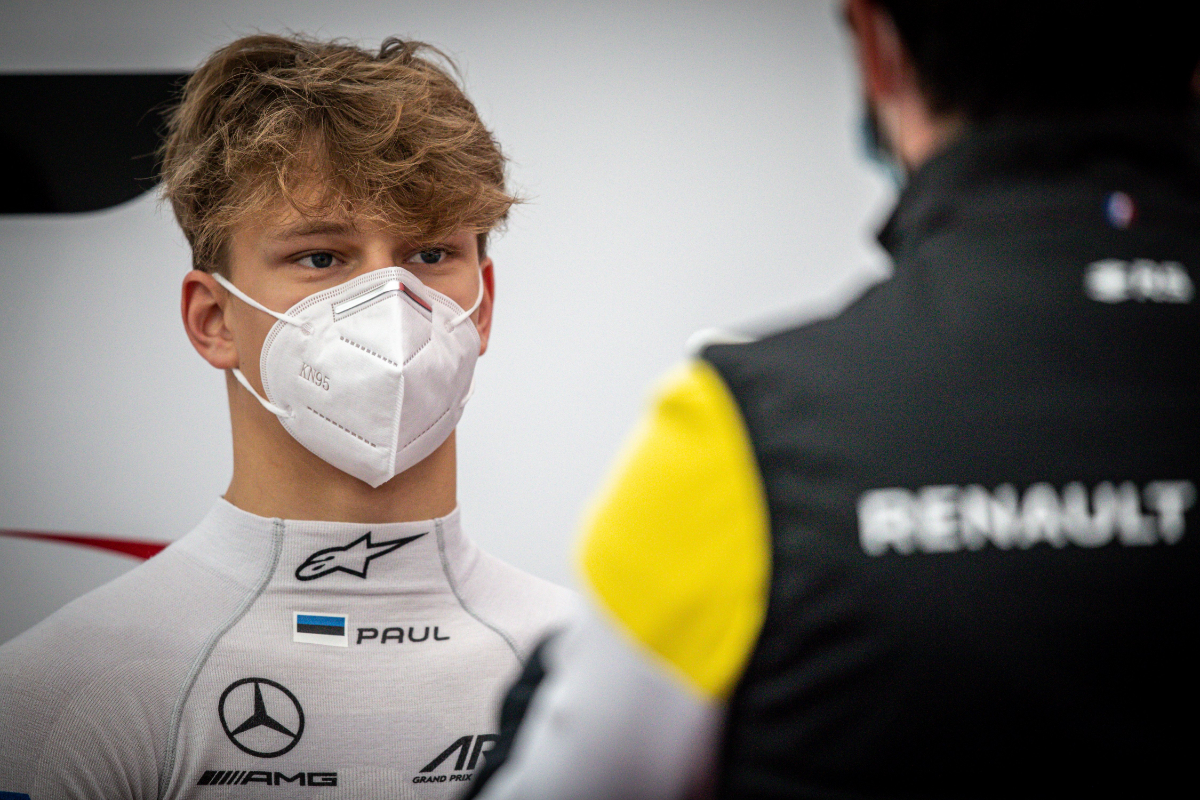 “What Mercedes does is they provide the driver with everything the driver needs, but they don’t make you feel like you have any pressure, you don’t feel like you are a Mercedes driver, maybe. You just feel like you’re kind of free and you can do whatever you want. So there are two different approaches. Mercedes lets you do what you want to do, and they just give you all the support you need, whereas Red Bull and Renault kind of book all of your free time to do some training camps and all that.”
“What Mercedes does is they provide the driver with everything the driver needs, but they don’t make you feel like you have any pressure, you don’t feel like you are a Mercedes driver, maybe. You just feel like you’re kind of free and you can do whatever you want. So there are two different approaches. Mercedes lets you do what you want to do, and they just give you all the support you need, whereas Red Bull and Renault kind of book all of your free time to do some training camps and all that.”
And while Aron didn’t train with his fellow Mercedes athletes, he did follow Valtteri Bottas’s lead in taking to the ice in winter.
“This year we tried to put together a winter training programme. We’ve tried that every year, but the problem’s been that in Estonia for the past few years the winter hasn’t been too good, so the lakes haven’t frozen fully and then we couldn’t do any ice driving. But this year there was finally a really, really good winter with minus degrees for months straight.
“So I did a lot of ice driving with some trainer from Estonia. We tried to work on different stuff like driving, and he was trying to give me as much information as possible on the radio, and I tried to still focus on the driving.
“He would give me mathematical equations while I was driving, then I had to answer the equations also while driving on the track, so it was kind of working on the mental side so that when I’m on the race track and my engineer gives me some information on a quali lap, that I can take it and still focus on my driving and not mess up the lap.”
Unlike a usual track with a clearly marked, circuits on frozen lakes are difficult-to-see outlines marked out by a few posts and a difference in the thickness of the lake-top snow. It’s all white, and is where some of the best rally drivers learn their craft.
“The times we went, the weather was quite hard. You have the ice track, but there’s a little layer of snow on it. And when you do laps, you clear like a little track where the ice is exposed, and on the winter tyres with the studs, there’s a lot more grip on the ice [than on snow]. So the moment you go a little bit off the line and you hit the snow, you go straight out. That’s why it’s really important to concentrate.
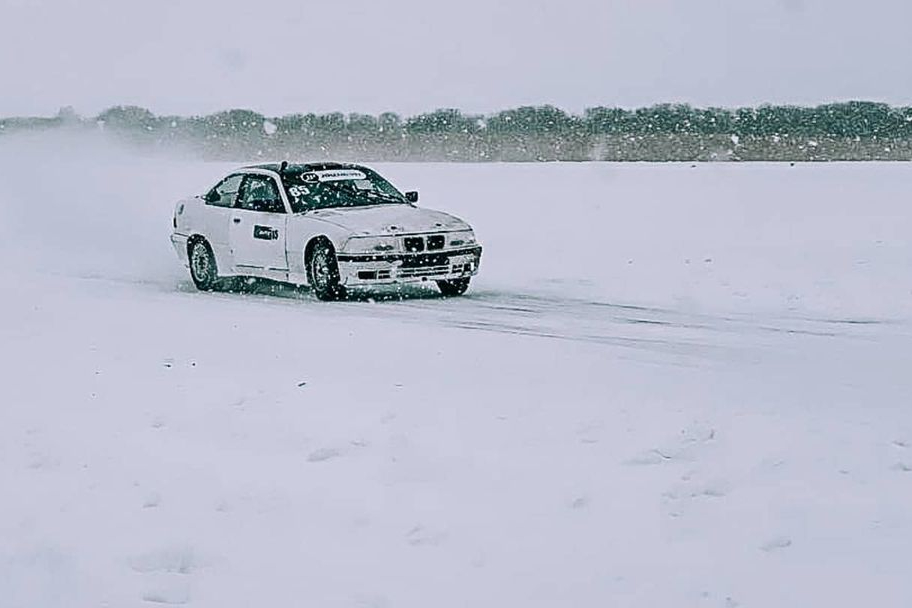 “The last time I went, there was also a snowstorm and we were in the middle of the lake, so you couldn’t see really anything, and you had small little tyres lines which are pretty much the width of the tyre which you had to follow, otherwise you would just go out.
“The last time I went, there was also a snowstorm and we were in the middle of the lake, so you couldn’t see really anything, and you had small little tyres lines which are pretty much the width of the tyre which you had to follow, otherwise you would just go out.
“It was definitely an interesting experience, and combining that with the mental side I think will help me a lot for the season.”
But as modern single-seaters aren’t to be thrown about like a rally car, how does the ice driving apply to circuit racing?
“The main idea of ice driving is to understand the change of the weight in the car,” Aron explains.
“Now, with the next generations, the cars are getting a lot heavier. All the junior single-seaters, F2, F3, especially Regional F3, are really heavy cars. So when you drive a rear-wheel-drive car on the ice, all you play with is the weight of the car. You don’t do much with the steering wheel, you do everything with the weight of the car. And if you manage to use the weight of the car to your advantage, this gives you much better pace on a real track.
“I think in the heavy car it is the main idea you have to understand is how to use the weight of the car to your advantage to get more rotation or less rotation.”
Alongside his racing, Aron is still at school in Estonia (where he’s currently living home alone as he completes the final step of getting his driving license) although he could relocate once racing begins as COVID-19 cases rise in his home country.
“To be honest, I like actually going to school. I mean I don’t like going to school, but I would see that if I wouldn’t go to school, I would go maybe a bit crazy. It’s just that when you’re in school, you always keep your mind occupied. If I wouldn’t go to school, I would just be like ‘I’m stupid’, like I wouldn’t do anything that would help me build me mentally.
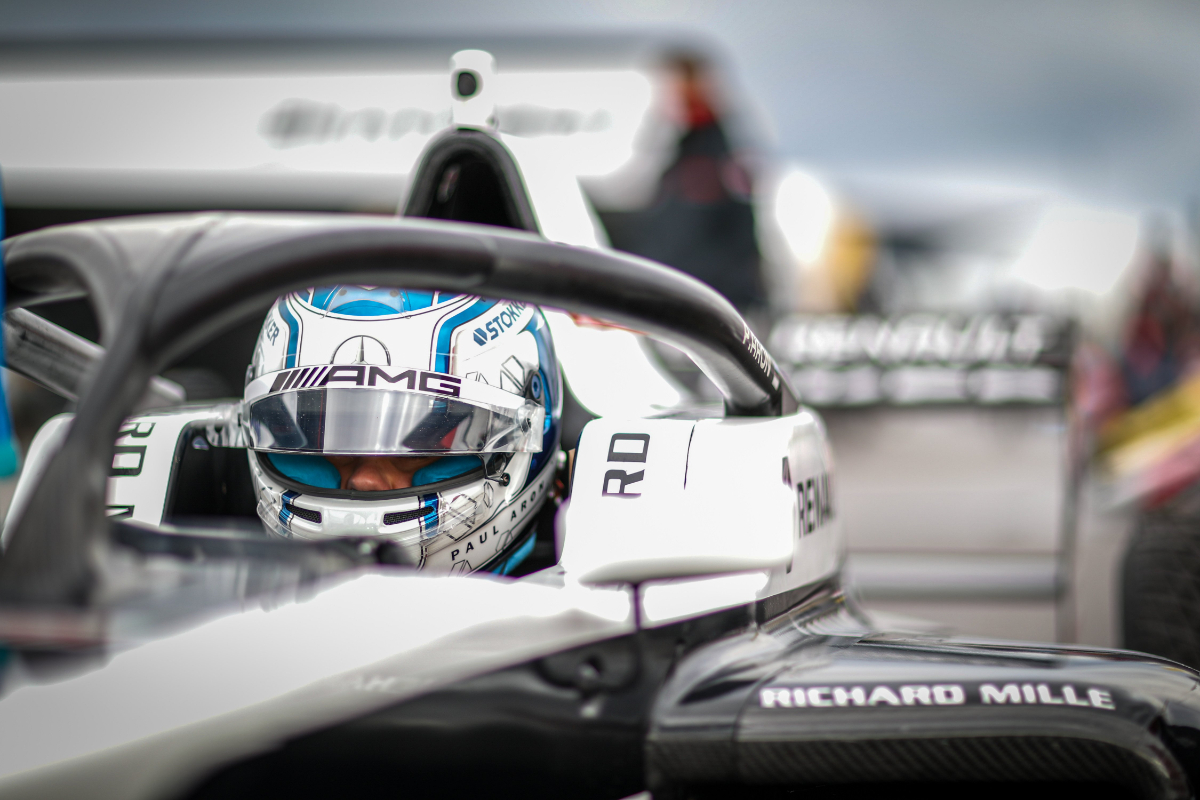 “I take English very seriously, and this year when you choose the options [to study], I chose Finance as one of the main things, so yeah it’s quite interesting to learn about that.”
“I take English very seriously, and this year when you choose the options [to study], I chose Finance as one of the main things, so yeah it’s quite interesting to learn about that.”
Older brother Ralf has been studying International Management and Finance at university, and Prema leapt upon that in 2019 when it needed a manager for its new FREC squad. Could Paul end up combining those interests in the coming years too?
“The goal is still to focus on my career as a driver. I guess when I would be owning my own team or being a team manager, I guess I would have failed in my [driving] career.
“Economics and finance are very interesting, but the main focus is still on achieving what I want from driving.”